Color Grading
-
The Mankalorian: Two Approaches to Digitally Captured 35mm Looks

The last time I wrote about film color for this magazine was on the ways 35mm shooting and digital color combined in Uncut Gems and Star Wars: The Rise of Skywalker to create contemporary looks strongly engaged with the past, resulting in what we might call a look “more filmic than film.” David Fincher’s Mank, along with a second season of the Star Wars TV series The Mandalorian, gives us an opportunity to consider how digital and celluloid tendencies combine from the opposite direction—both were shot digitally, then graded to explicitly evoke celluloid. Once again, color grading and capture format […]
by Jessica Dunn Rovinelli on Dec 9, 2020 -
Color Grading Film and Digital for Wonderstruck
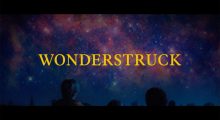
Colorist Joe Gawler of Harbor Pictures has worked on a number of films and television shows over the years, including A Most Violent Year, Midnight in Paris and Arrival. For Wonderstruck, Gawler had to work with multiple film stocks. The story takes place in two time periods—the 1920s and the 1970s—and black & white and color film were used to convey the different time periods, while digital material was also shot for both periods. In this interview he talks about working with film and digital and how to become a better colorist. Filmmaker: How did you become involved in this project? Gawler: There’s […]
by Michael Murie on Oct 26, 2017 -
Post Workflow Gets Blurred and (Sometimes) Free with Updates From Avid, Blackmagic, Adobe, Apple
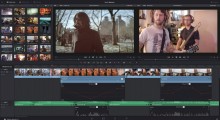
While most of the attention paid to Blackmagic’s releases at NAB went to their slew of new and updated cameras, they also released DaVinci Resolve 12, which they say has made a bigger improvement in the last year than their last five years of updates. When they introduced 11 last year, they announced new editing tools within the app. They’ve further expanded Resolve as a feasible NLE with multicam features, tons of trim mode options, and a brand new audio engine for audio editing. I played around with Resolve at the booth. The timeline definitely felt familiar and the ease of making […]
by Joey Daoud on Apr 16, 2015 -
Watch: How Color Correction Alters a Film’s Tone
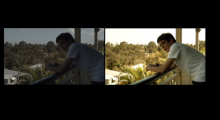
Color correction is often the least talked about, most overlooked portion of the post-production process. Alex Bickel has spoken out about how grading can alter the presumed production value of a film, and a recent guest post from Michael Medaglia and Jalal Jemison discussed the importance of communicating your story through the process. This video from the International Colorist Academy offers a nice visual supplement to the aforementioned claims, as it demonstrates the colorist’s ability to amend the tone and context of any given scene. When it comes to transforming day to night, and romance to horror, some things can be left […]
by Sarah Salovaara on Sep 2, 2014 -
How To Survive Your First Color Grade
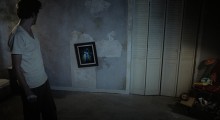
For any film, color grading is an essential part of the process. For some it’s simply a way to get the shots within a scene to match cohesively, despite adjusted lights or a change of sun position. For others it can help tell the story. Either way, If you’ve never sat in on a coloring session before, the whole thing can seem quite daunting. Jalal Jemison has colored five features and has an extensive background in VFX and compositing. He has been a VFX supervisor, a director, a lead compositor and has had his own small VFX studio. For the […]
by Michael Medaglia and Jalal Jemison on Aug 6, 2014 -
Red Giant Creates Universe and Updates Software Suite

At NAB Red Giant announced a wide array of updates and new effects across their various programs. A lot of the changes revolve around Supernova, an original framework they developed that enables them to rapidly create new effects that run quicker than before. This is the backbone of their new Universe plug-in suite, a collection of 50 effects, everything from lens flares to retro film looks. Universe is also experimenting with the subscription model, though not forcing anyone to commit. You can choose a recurring pricing option for $10 a month or $99 a year, or get a lifetime membership (essentially […]
by Joey Daoud on Apr 22, 2014 -
DaVinci Resolve 11 – New Editor on the Block?

Besides the new URSA and Studio camera announcements, Blackmagic announced some new updates to their popular coloring software DaVinci Resolve. While the newest version boasts over 100 new features, the vast majority of them are improvements to the editing capabilities. In previous versions the editing area of Resolve was more for making tweaks to an ingested timeline to correct any errors or drop in footage that didn’t import properly. Now it’s aiming to be a full fledged editor. The latest version adds a bunch of features you’d find in most NLEs – lots of timeline trimming options and keyboard controls, […]
by Joey Daoud on Apr 10, 2014 -
Red Giant updates Magic Bullet Looks & PluralEyes
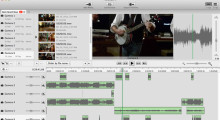
Red Giant has today announced updates to two of their filmmaking software tools. Magic Bullet Looks has become popular with filmmakers who want to do a quick color grade for a project but don’t have the time – or the skill – to use a tool like DaVinci Resolve. This update adds several features, but perhaps of most interest to those who already have the tool is the promise of speed increases of up to 95% on Windows, and 25% on Macs. According to Red Giant, this release was entirely rewritten on their new development platform Universe, which provides GPU accelerated […]
by Michael Murie on Mar 31, 2014 -
DaVinci Resolve 10 Adds Editing to its Toolset
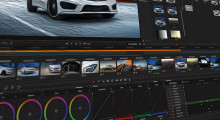
DaVinci Resolve began life as a high-end grading tool found in expensive color suites. Its purchase by Blackmagic hasn’t lessened its sophistication – they’ve continued to expand its tool set – but it has seen the software’s price lowered substantially, a free “lite” version released, and a redesign of its UI that has made it a lot friendlier to new users. Resolve is still a complicated and sophisticated tool, and color grading is a skill that can take a lot of study to master, but if you’re doing any image manipulation to your footage you shouldn’t ignore the functionality Resolve […]
by Michael Murie on Nov 25, 2013 -
Color Grading The Kings of Summer

Director Jordan Vogt-Roberts’ coming of age comedy The Kings of Summer premiered successfully at Sundance this year, but it took a hectic few weeks of work to grade and produce the final deliverables in time to make the Sundance submission deadline. The Kings of Summer was graded by Narbeh Tatoussian, senior DI colorist at Blacklist Digital. Tatoussian has worked in the industry for over 16 years. He started in the shipping vault, then moved up through post-production and the QC department before becoming a tape room supervisor, assistant colorist and finally a colorist. During that time he says that’s he’s […]
by Michael Murie on Sep 6, 2013
